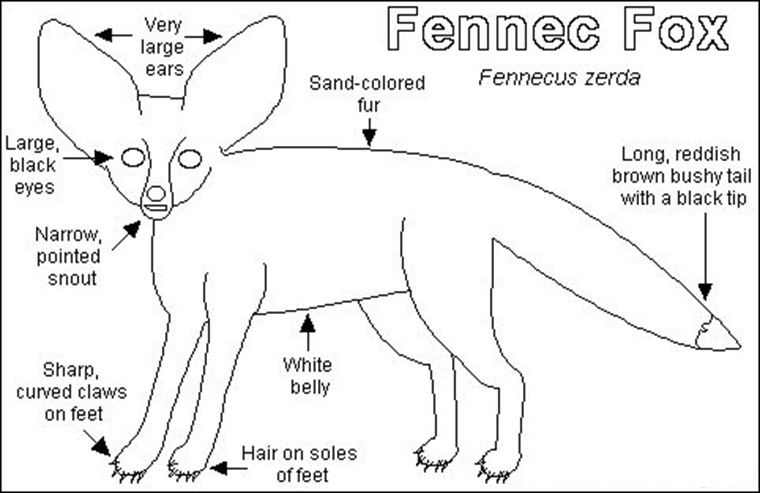Foxes are some of the most fascinating creatures in the animal kingdom, known for their adaptability, cunning behavior, and striking appearance. As members of the Canidae family, which also includes wolves and domestic dogs, foxes possess a variety of unique body parts that serve distinct functions, enabling them to thrive in diverse environments. In this article, we will explore the anatomy of a fox by examining key body parts, their structures, and the vital roles they play in a fox’s survival and lifestyle.
A Body Part of A Fox

The Tail (Bushy Brush)
One of the most recognizable features of a fox is its bushy tail, often referred to as a “brush.” The tail serves multiple important functions:
- Communication: Foxes use their tails to communicate with one another. For instance, the position and movement of the tail can indicate a fox’s mood, such as fear, aggression, or excitement. A raised tail may signal confidence, while a lowered tail might show submission or fear.
- Balance: The tail helps foxes maintain balance, especially when navigating uneven terrain or making swift, agile movements. This is particularly useful for species like the red fox, which often leap and sprint to catch prey.
- Insulation: During cold weather, foxes use their tails as a source of warmth. They curl up and wrap their tails around their bodies to retain heat, protecting themselves from frostbite and hypothermia.
- Camouflage: The coloration of a fox’s tail often blends with its surroundings, helping it remain concealed from predators or prey.
The Ears
Foxes have large, upright ears that contribute significantly to their survival. These ears are not only a defining characteristic of their appearance but also perform several critical functions:
- Hearing: Foxes have exceptional hearing and can detect high-frequency sounds, such as the rustling of leaves or the movement of small rodents underground. Their acute auditory sense enables them to locate prey even when it is hidden from sight.
- Thermoregulation: In species like the fennec fox, the ears are particularly large and help dissipate heat, allowing the animal to survive in hot desert environments. Blood vessels in the ears release excess heat, cooling the fox’s body.
- Communication: Similar to their tails, a fox’s ears also play a role in expressing emotions. Ears positioned forward may indicate curiosity or alertness, while flattened ears can signal aggression or fear.
The Eyes
A fox’s eyes are another remarkable feature, designed for superior vision in various conditions:
- Night Vision: Foxes are crepuscular animals, meaning they are most active during dawn and dusk. Their eyes are adapted for low-light environments, with a high density of rod cells that enhance night vision.
- Vertical Pupils: The vertical slit-shaped pupils of foxes allow them to control the amount of light entering their eyes more effectively. This trait improves their ability to focus on prey and gauge distances accurately, aiding in hunting.
- Color Perception: While foxes cannot see the full spectrum of colors that humans do, they can distinguish shades of blue and green. This limited color vision is sufficient for their needs in the wild.
The Paws
Foxes’ paws are uniquely adapted for their lifestyles and environments:
- Traction: The pads on a fox’s paws provide excellent grip, allowing them to move swiftly and silently across various surfaces, including snow, mud, and rocky terrain.
- Claws: Foxes have semi-retractable claws that help them dig burrows, capture prey, and climb trees. While not as sharp as those of cats, these claws are vital for survival.
- Insulation: In cold climates, the fur on a fox’s paws acts as insulation, preventing heat loss and enabling the fox to traverse icy surfaces without discomfort.
The Nose
A fox’s nose is a highly developed sensory organ that plays a crucial role in its daily activities:
- Olfaction: Foxes rely heavily on their sense of smell to locate food, identify other animals, and detect potential threats. Their noses are capable of picking up faint scents over long distances.
- Marking Territory: Foxes use their noses to detect and interpret scent markings left by other animals. They also mark their own territories using scent glands located near the base of the tail.
- Prey Detection: A fox’s nose helps it track prey, even when it is hidden beneath snow or underground. This ability is especially useful in winter when food is scarce.
The Fur
The fur of a fox is not just a beautiful coat; it serves several essential purposes:
- Thermal Insulation: Foxes have thick fur that keeps them warm in cold climates. The undercoat traps heat close to the body, while the outer layer repels water and wind.
- Camouflage: The color and pattern of a fox’s fur often blend with its environment, providing camouflage that helps it evade predators and stalk prey undetected.
- Seasonal Changes: Many fox species undergo seasonal changes in fur thickness and color. For example, the Arctic fox’s coat turns white in winter to blend with the snow and brown in summer to match the tundra.
The Teeth
Foxes have a set of 42 teeth designed for their omnivorous diet:
- Canines: The sharp canine teeth are used to grab and kill prey quickly and efficiently.
- Molars: The molars at the back of a fox’s mouth are adapted for grinding and chewing plant material, such as berries and fruits.
- Versatility: This dental structure allows foxes to consume a wide range of foods, from small mammals and birds to insects and vegetation, making them highly adaptable.
The Legs
Foxes’ legs are built for speed and agility:
- Running: Foxes are capable of running at speeds of up to 30 miles per hour when chasing prey or escaping predators. Their long, slender legs contribute to this ability.
- Leaping: Foxes are known for their impressive leaping skills. They can jump several feet into the air to catch birds or pounce on rodents hiding under snow.
- Stealth: The quiet movement of a fox’s legs allows it to stalk prey silently, increasing its chances of a successful hunt.
Conclusion
The anatomy of a fox is a testament to its adaptability and survival skills. Each body part, from the bushy tail to the sharp teeth, serves a specific purpose that enhances the fox’s ability to thrive in diverse habitats. By understanding the functions of these body parts, we gain a deeper appreciation for these remarkable animals and their role in the ecosystems they inhabit.


